Bruce McMahon has been four-wheel driving for about as long as there has been four-wheel drives. So who better to offer newcomers his top-four 4WD driving tips for getting there and back again safely? Welcome to 4x4 school.
Australians are fortunate to have what might be the world’s best off-road playground on their doorstep. Whether it’s rugged mountain ranges or sweeping plains, there’s no shortage of incredible places to explore, and off-roading adventures to be had.
From Betoota to Broome, the Victorian high country to the Tanami Track, there’s always a swag of big-sky scenery and new 4WD off-road driving adventures to discover. The thing is, you’ll need a proper four-wheel drive to fully appreciate it. And an idea of how to use these all-terrain machines.
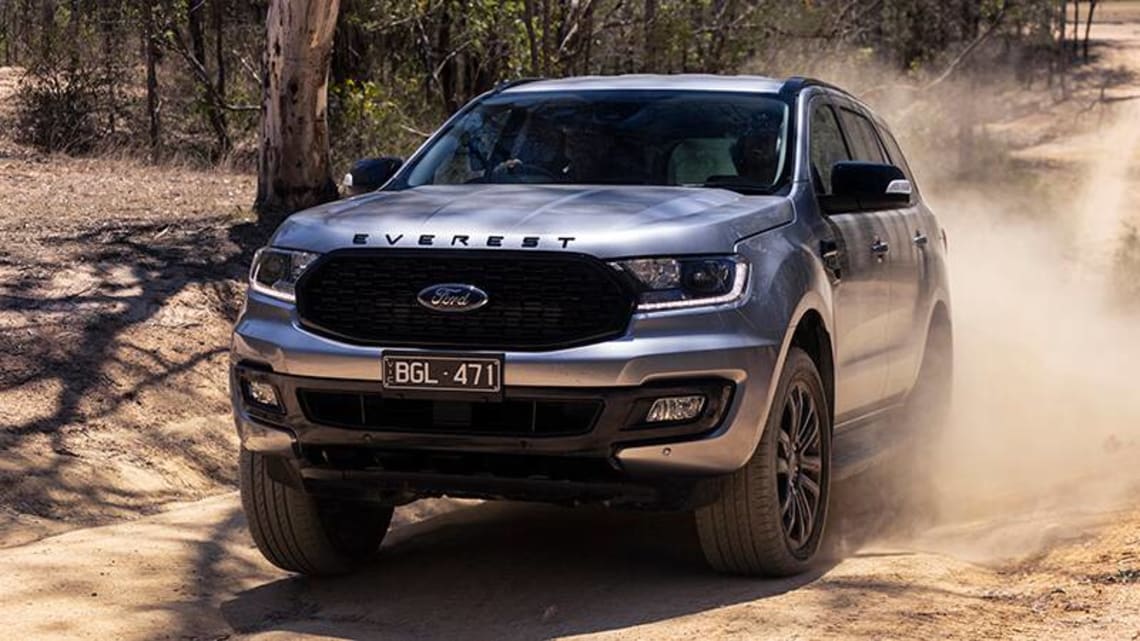
Happily, the business of dealing with off-road conditions is easier today than it used to be. Back then, 4x4 driving meant getting out to lock front hubs, graunching a lever into four-wheel drive, riding clutches to crawl over rocks and praying handbrakes would hold on mud-slicked slopes. Now, though, clever new technology blends with mechanical toughness to make off-roading easier than you might think.
Be warned, though. Not all SUVs are created equal when it comes to getting off the beaten track. Proper off-road 4x4s blend old-school know-how, and decent ground clearance, with modern technology.

The likes of the Ford Everest 4x4, which is based on the tough Ranger ute, fits the bill perfectly. It runs with a ladder-frame chassis, permanent four-wheel drive, a brace of diesel engines (with loads of torque), plus good approach and departure angles, all of which are perfect for driving off-road.
Added to those are the likes of Hill Descent Control* and a Terrain Management System**, where computers work on optimal engine, transmission and braking responses to maintain traction on a range of surfaces; an Everest driver, for instance, can simply select between normal drive, snow/mud, sand or rock modes and let the vehicle do the thinking for them.
It means you never need to worry about customising the Ford Everest’s off-road setup — the hard work is automatically done for you.
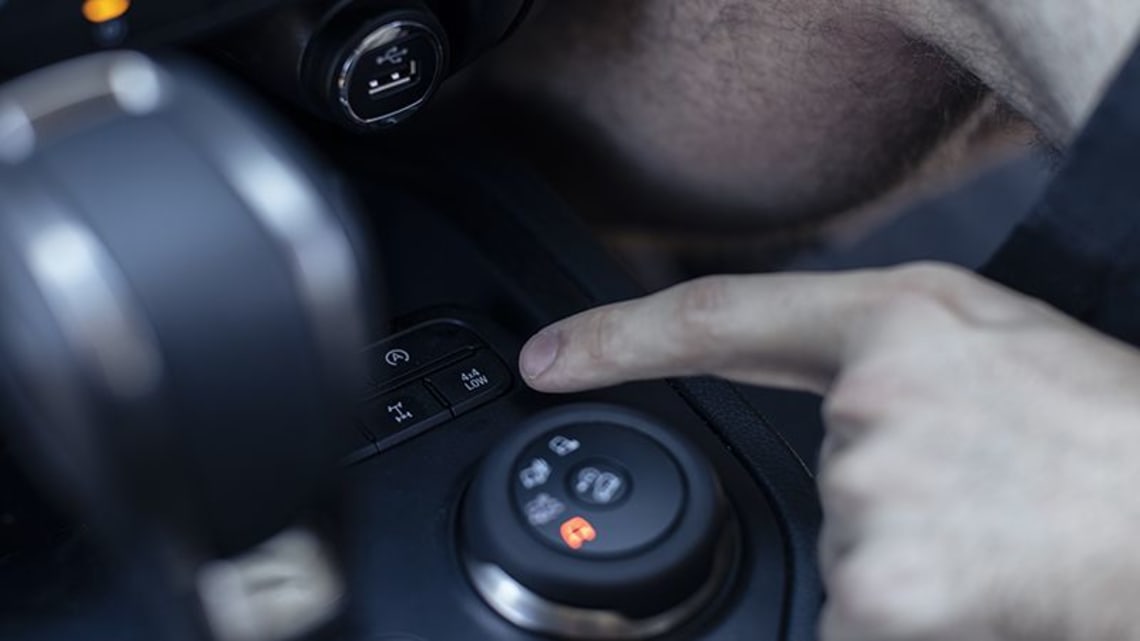
Yet there remains the need for a couple of tips. And some practice. And for the latter, a trip to a dedicated four-wheel-drive park, such as the Perrett’s 4000-hectare cattle property outside Jimna in southern Queensland, is perfect to get a feel for a new machine. Places like this offer various hills and creeks and gullies, plus camp spots, for a weekend’s dirt-tracking without having to travel too far off the beaten path to learn how to drive a 4WD.
TIP 1: PREPARING FOR ADVENTURE

First up, check over the vehicle. Are your tyre pressures correct (the placard inside the door will tell you where they need to be)? Is the spare tyre up to scratch? Full fuel tank? No loose bodywork or tow hitch to catch? Nothing loose floating around inside the cabin? Good.
Next, get some idea of low points on the chassis and body — the Everest has a very healthy 227mm of ground clearance, 29.5 degrees of approach angle, a ramp-over angle of 21.5 degrees plus departure angle of 25 degrees, for example, which means you can trust your Ford Everest off-road.
While modern four-wheel drives are clever at conquering all manner of bush and beach tracks, there are two extra aids even experts carry — a tyre-pressure gauge (or, in the Ford Everest, the on-board Tyre Pressure Monitor ) and a set of recovery tracks, such as the Australian-designed MaxTrax.
TIP 2: Tackling tricky downhill descents

Climbing hills may require extra power, and sometimes a little on-off throttle modulation, although modern traction-control systems help out here. It’s the steep descents which can bring on the nervous sweats.
This is where the Ford Everest’s Hill Descent Control* is arguably the best, and the most drama-reducing, of modern off-road technologies. In the old days, it’d be low-low, on and off the brakes, clutching at the handbrake for comfort and squirming in the driver’s seat.
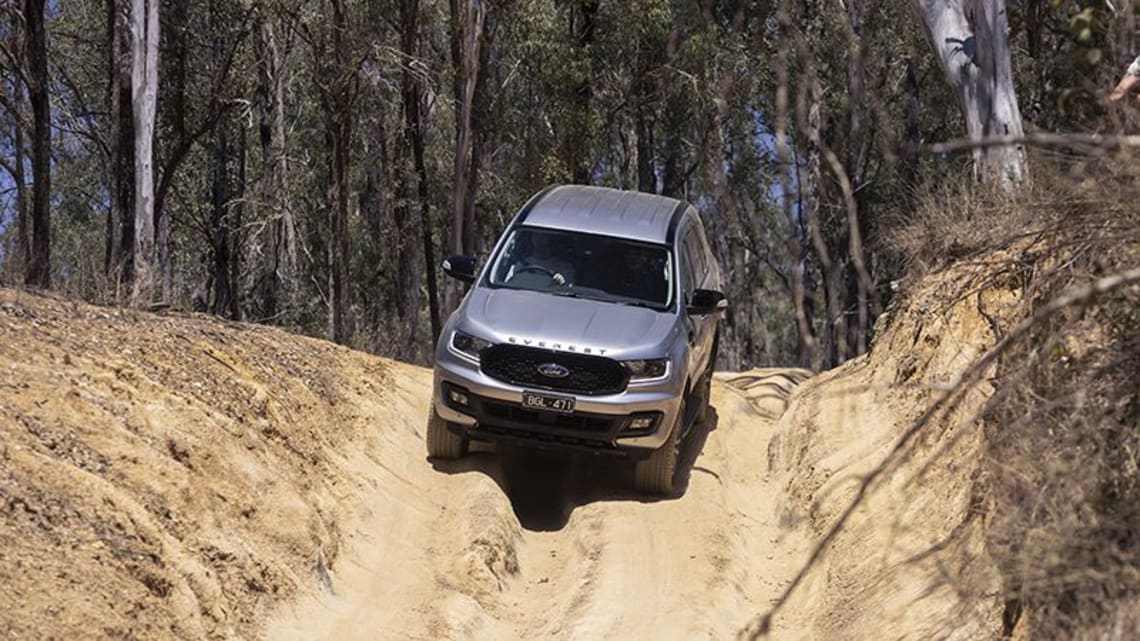
What is Hill Descent Control*? You simply push the HDC button and the vehicle’s computer management applies brakes automatically to maintain a safe crawl while the driver simply steers, feet off all pedals. In some vehicles, like the Everest, that downhill speed can even be adjusted on the fly to suit the slope.
TIP 3: Nail your next water-crossing
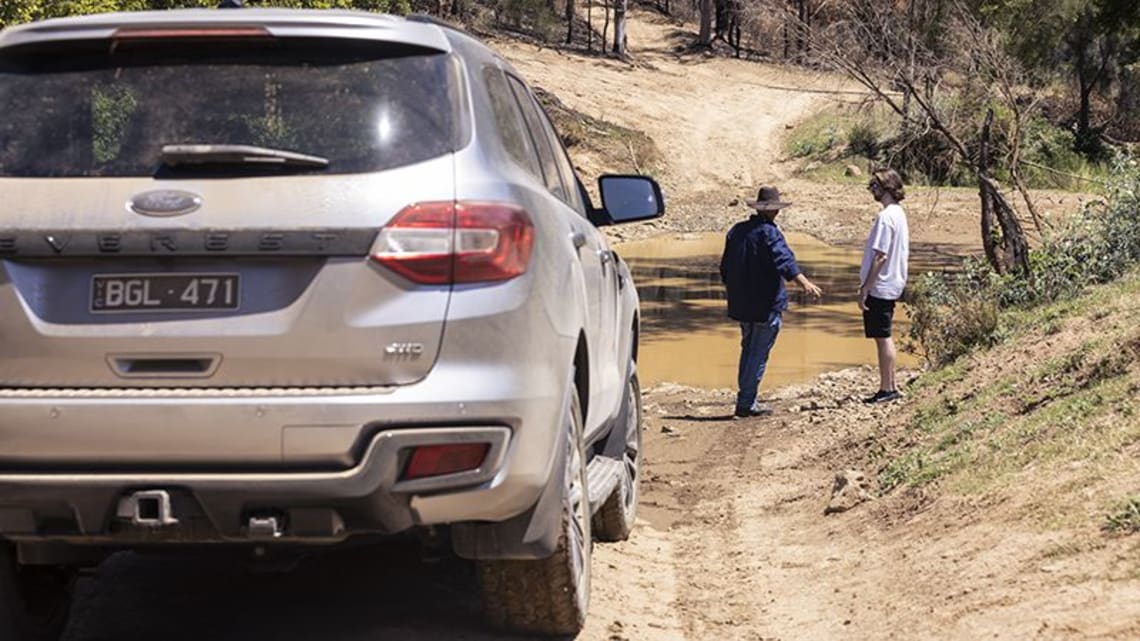
Second gear low range is useful for water crossings, ideally tackled only when necessary and with an idea of the water’s depth (often through someone stripping to their undies and wading in, or watching other vehicles ahead of you).
Without a snorkel, you also need to know your SUV’s wading depth — in the case of the Ford Everest that’s 800mm — before water may get into the engine. The Ford Everest 4WD’s wading depth is about waist height for most people, which is plenty deep, and deeper than almost any crossing you’re likely to encounter.
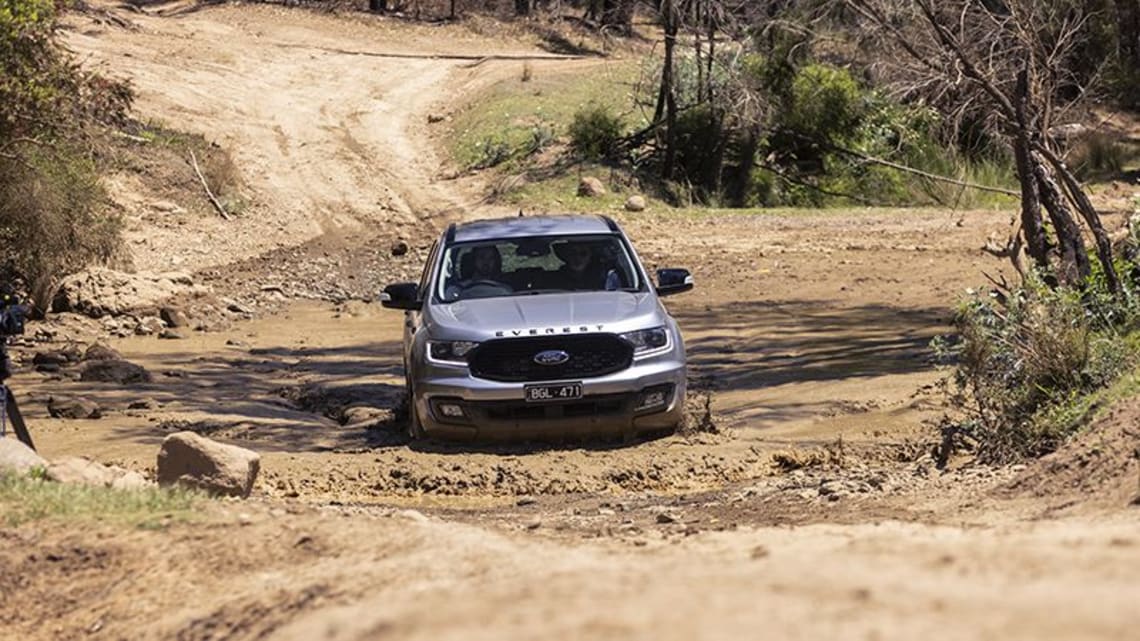
Approach the crossing slowly and then, with an even and confident throttle setting, create a bow wave which pushes the water to the sides of the vehicle. It’s all steady as she goes from there until you’re back on dry land. See? 4WD water crossing is easy.***
TIP 4: Rock-hopping and articulation
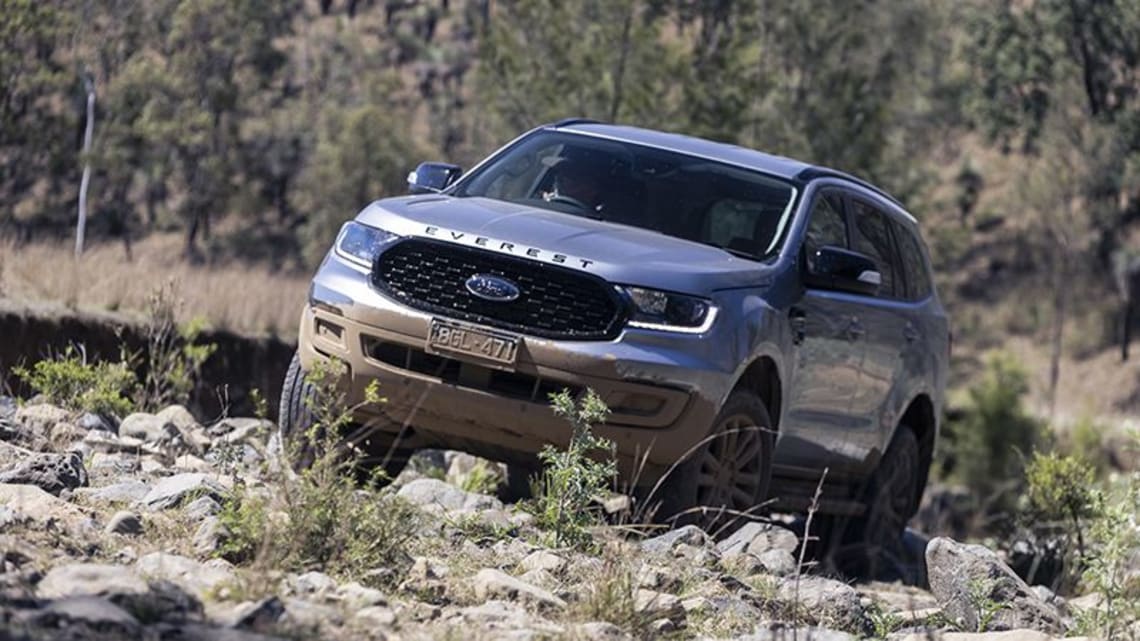
Rock crawling or rock hopping demands patience. This is slow-slow business where ground clearance and torque are your best mates. Again, this is where your Terrain Management System** helps, ensuring gearing is low while throttle and transmission responses are smooth and precise rather than abrupt, or tardy, which may bounce you into strife.
Different off-road terrains require different driving techniques, most done at slow to moderate speeds.

For beach work, or long stretches of sand, lower tyre pressures to around 18psi (1.24 bar); this increases the amount of tyre contact. Keep up steady momentum, and it’s here an auto transmission-turbocharged diesel combination helps with maintaining a smooth throttle.
Muddy patches need a steady approach without too much hanging around. Keep up speed a little to stop bogging. This is another instance where your Terrain Management System** will adjust the vehicle’s mechanical responses to suit conditions.
And the most important tip of all? Have fun out there. Off-road driving is less daunting than you might think, and in a vehicle like the Ford Everest, far easier, too.

*Hill Decent Control - Driver-assist features are supplemental and do not replace the driver’s attention, judgment and need to control the vehicle. May not operate at certain speeds, or in certain driving, road or weather conditions.
**Terrain Management System – Available on 4WD models only. The driver is responsible for assessing off-road situations, determining if the terrain is passable and using appropriate off-road driving techniques. To activate Rock mode, the vehicle must be stationary and in 4WD low range. Mud, Grass or Snow mode does not replace the need to fit chains if required.
***Water Wading – Maintaining a steady speed of not more than 7km/h.






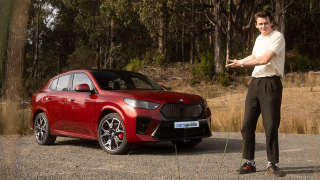
Comments